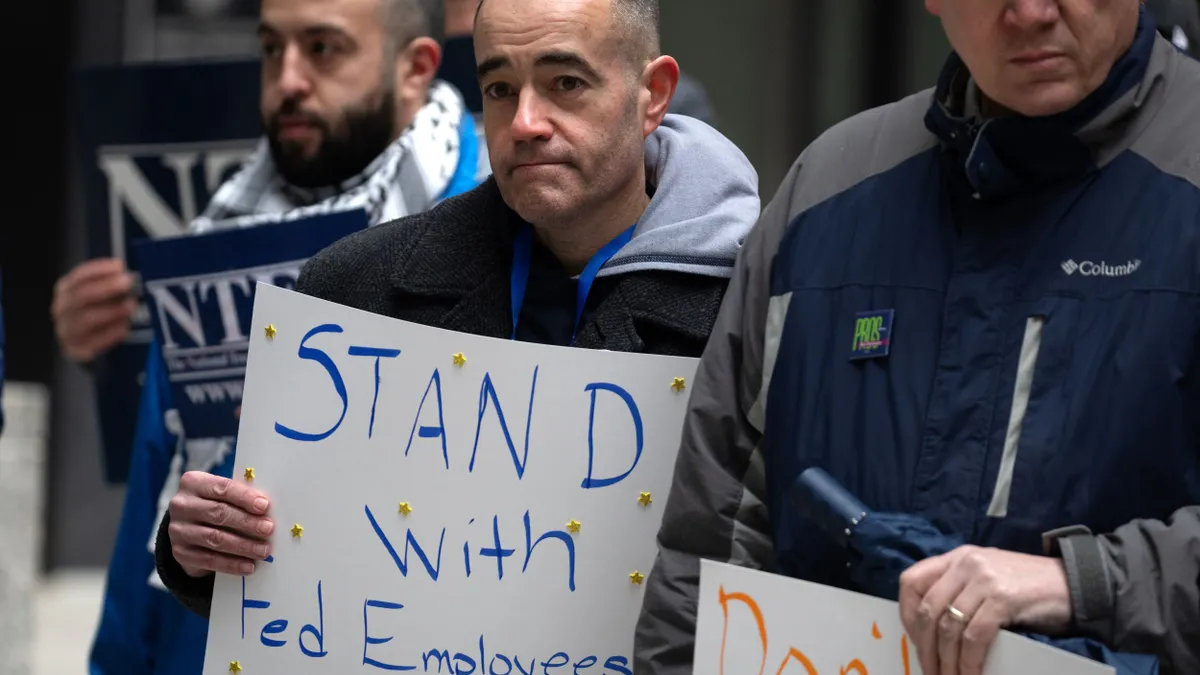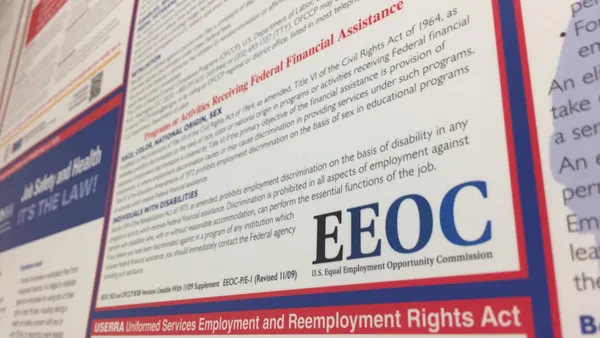During the past few years, work scenarios have changed, particularly with regard to mental health issues, employment attorneys told attendees at a recent Florida Bar conference.
With this in mind, presenters discussed some best practices HR pros should keep in mind as they head into the new year. The practices are familiar; the key is making sure they’re properly applied to current scenarios.
1. Know your options
Per the National Alliance on Mental Illness, 1 in 5 U.S. adults experience mental illness each year, Stephanie Marchman, a shareholder at GrayRobinson, reminded attendees at the start of her presentation. “Given the prevalence of mental health issues in the population generally, we routinely see employees in need of FMLA, accommodations, or EAP assistance related to mental illnesses,” Marchman told HR Dive in a follow-up email.
It’s important that HR — and front-line managers — know how to deal with the issue “because it affects productivity and because employers care about employee wellness,” Marchman explained.
When an issue arises, HR should carefully consider what comes next, she emphasized to conference attendees. That is, employers must balance the rights of the individual against those of other employees. If an employer acts too quickly when the employee is not a direct threat, it may incur liability. But it also may incur liability if it doesn’t act quickly enough.
Noticeable changes in behavior, such as mood swings or outbursts of anger, can be a determining factor, Marchman said. HR may then examine the options, including having the employee undergo a fitness-for-duty exam. Under the Americans with Disabilities Act, such an exam is “only permitted where you have reasonable belief, based on objective evidence, that a particular employee will be unable to perform the essential job functions or will pose a direct threat because of a medical condition,” according to U.S. Equal Employment Opportunity Commission guidance.
Marchman offered a hypothetical scenario involving an employee who took leave following her mother’s death. After she returned to work, there were rumors she took leave for depression. A co-worker reported to HR that he heard from other people she was talking to herself and threatened to harm others. The co-worker didn’t witness this behavior but expressed concern for his safety.
In the hypothetical, HR conducted an investigation, but no one confirmed the employee made the statements, and her manager reported that she was satisfactorily performing her duties. According to the EEOC, HR may not require a fitness-for-duty exam because the co-worker’s information was based on rumor and couldn’t be confirmed, Marchman explained. However, HR can check in with the employee to see if she’s okay (but not discuss her health or possible disability) and remind her she has resources available to her, including an EAP, Marchman pointed out.
2. Don’t rush the interactive process
Jackson Lewis attorney Brian L. Hayden presented another hypothetical: What are HR’s options if an employee wants to work remotely because a co-worker is allegedly worsening their mental health?
A reasonable accommodation can be a change in environment due to a health condition, Hayden’s handouts explained. In his hypothetical, if HR determines remote work isn’t viable and there is an empty office available, HR could offer to let the employee work in that space, Hayden suggested to attendees.
Once an employee requests an accommodation, it’s all about the interactive process, Hayden noted. The process may take longer than expected, but HR shouldn’t rush through it, Hayden said.
If HR doubts the veracity of an employee’s request, HR shouldn’t disclose this to the employee, Hayden told HR Dive in an email. Instead, HR should ask the employee to obtain medical documentation supporting the need for the requested accommodation and verifying that it would allow the employee to perform their job’s essential functions.
3. Keep supervisors and managers properly trained
It’s hugely important that supervisors and managers know how to recognize ADA accommodation and Family and Medical Leave Act requests, Hayden stressed. “Managers are on the front line, where problems start and grow if issues are not spotted,” he explained in the email. Training should include how to recognize potential issues, even if the terms “ADA”, “FMLA” and “reasonable accommodation” aren’t used, Hayden wrote.
Remote work doesn’t change the analysis, he added. But it can require more effort to remain connected and in tune with employees’ situations.
The same goes for spotting mental health issues, Marchman told HR Dive. Supervisors should schedule regular check-ins with an employee working remotely because they may not interact with the employee as much as they would if the employee was in the office, she noted.
Supervisors also should look for the same things they would if they were interacting with the employee in person, Marchman said. Besides changes in behavior and conduct, they can watch for lost productivity and work performance issues, she noted. Supervisors also should be attuned to comments attributing poor performance to depression and anxiety and comments mentioning treatment for such issues, Hayden added.
4. Be diligent about documentation
Employers need to maintain clear, updated and easily accessible policies — preferably in an employee manual, Alison F. Smith, a partner at Weiss Serota Helfman Cole and Bierman, emphasized in her presentation.
With regard to the ADA, job descriptions also have to be kept up to date so employees are on notice of the job’s essential functions and employers have documentation, if needed, to support their position that an employee was not able to perform those functions, Hayden said.
Being diligent about documentation is another must for HR, Smith told HR Dive. Misconduct needs to be documented, as well as the employer’s response, Smith said. She recommended also documenting verbal counseling because this is the first step toward progressive discipline and undercuts a claim the employee was treated unfairly or too harshly.
For supervisors who hate to document, the most persuasive thing HR can do give them specific examples why it’s important, Smith added. HR can also emphasize that as an extension of the company, they could be personally liable, served a subpoena or called to testify. “That generally gets their attention,” she said.
5. Understand the risks
It’s crucial that HR pros understand and communicate the risks at hand, according to one conference attendee. Barbara Hitzemann, HR director for Pasco County, Florida, attended law school and said that while it didn’t change the way she viewed HR, “it certainly gives me a lot of credibility when I am having an argument/discussion, particularly with lawyers on the other side,” she wrote in an email interview with HR Dive.
“I do think understanding where the true risk lies is imperative,” she emphasized. This means understanding what you can and can’t get sued for and allows HR to make better decisions for the organization, Hitzemann said. One of the biggest mistakes HR pros make is not recognizing that “it’s completely legal to treat people differently based on job performance, behavior, etc.” — and failing to create policies that allow just that, she explained.




















